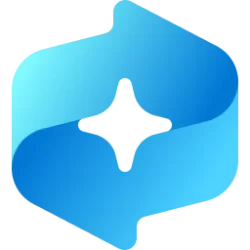Navigation
Install the app
How to install the app on iOS
Follow along with the video below to see how to install our site as a web app on your home screen.
Note: This feature may not be available in some browsers.
More options
Style variation
-
Disable Automatic Windows Updates in Windows 11
This tutorial will show you how to disable Windows Update from automatically downloading and installing updates in Windows 10 and Windows 11.- Brink
- Replies: 17
-
Use ViVeTool to Enable or Disable Hidden Features in Windows 11
This tutorial will show you how to use ViVeTool to enable or disable hidden features in Windows 10 and Windows 11.- Brink
- Replies: 49
-
Restore Classic File Explorer with Ribbon in Windows 11
This tutorial will show you how to restore the classic File Explorer with Ribbon for your account or all users in Windows 11.- Brink
- Replies: 422
-
Create Windows 11 Bootable USB Installation Media
This tutorial will show you how to create a bootable USB flash drive used to install Windows 11 with UEFI support.- Brink
- Replies: 135
-
Uninstall or Reinstall Copilot app
This tutorial will show you different ways to uninstall or reinstall the Copilot app for your account or all users in Windows 10 and Windows 11.- Brink
- Replies: 0
-
Add or Remove "Learn about this picture" Desktop icon
This tutorial will show you how to add or remove the "Learn about this picture" desktop icon when using Windows Spotlight as your desktop background for your account in Windows 11 and Windows 10.- Brink
- Replies: 27
-
Use SFC to Repair System Files in Windows 11
This tutorial will show you how to run the System File Checker (SFC) tool to repair missing, corrupted, and modified system files in Windows 10 and Windows 11.- Brink
- Replies: 25
-
Download Official Windows 11 ISO file from Microsoft
This tutorial will show you how to download an official Windows Server ISO or Windows 11 64-bit or ARM64 ISO file from Microsoft.- Brink
- Replies: 428
-
Repair Install Windows 11 with an In-place Upgrade
This tutorial will show you how to do a repair install of Windows 11 by performing an in-place upgrade without losing anything.- Brink
- Replies: 339
-
Clean Install Windows 11
This tutorial will show you step by step on how to clean install Windows 11 at boot on your PC with or without an Internet connection and setup with a local account or Microsoft account.- Brink
- Replies: 243
You are using an out of date browser. It may not display this or other websites correctly.
You should upgrade or use an alternative browser.
You should upgrade or use an alternative browser.
Tutorials
Windows 11 tutorials, tricks, tips, and guides.
Filters
Show only:
Loading…
This tutorial will show you how to view the storage usage of local storage drives in Windows 11.
Storage usage lets you see how your storage is used on a drive and how you can free up space.
Option One: View Storage Usage of a Drive in File Explorer
Option Two: View Storage Usage of a Drive in Settings
Option Three: View Storage Usage of System Drive in Settings
View Storage Usage of a Drive in File Explorer
1 Open This PC in File Explorer (Win+E).
2 Right click or press and hold on any local drive, and click/tap on Properties. (see screenshot below)
3 In the General tab, click/tap on the Details or Storage usage button. (see screenshots below)
4 You will now see how storage is being used on this specific drive. You can...
This tutorial will show you how to enable or disable Storage Sense to automatically free up system drive space for all users in Windows 10 and Windows11.
Storage Sense can automatically free up drive space for you by getting rid of items that you don't need, like temporary files and items in your Recycle Bin.
Storage Sense is off by default. If your PC runs into low disk space and you have not interacted with Storage Sense in the past, Windows may turn on Storage Sense to manage select temporary files, then notify you. If you prefer, you can choose to turn Storage Sense off right away or after the low disk state is resolved.
If Storage Sense is turned on with the default settings, it will run when your device is low on disk space and...
Accounts Add and Remove Microsoft, Work, or School Accounts used to sign in by other apps in Windows 11
This tutorial will show you how to add and remove accounts used by other apps to sign in with for your account in Windows 11.
Windows 11 makes it easy to add the Microsoft accounts or Work or school accounts you use for your apps in one place so you can sign in to your favorite apps easier and faster.
When you add an account in this central location in Settings, that account will be a listed account available to select to sign in to an app with. This can be handy so you no longer have to manually add the account for each individual app you want to sign in to with it.
Reference:
https://support.microsoft.com/en-us/windows/add-or-remove-accounts-on-your-pc-104dc19f-6430-4b49-6a2b-e4dbd1dcdf32
If you sign in to Windows 11 with a...
This tutorial will show you how to restart the StartMenuExperienceHost.exe process to restart the Start menu as needed for your account in Windows 11.
The Start menu is comprised of three sections: Pinned, All apps, and Recommended. The Start menu contains shortcuts of all your apps, settings, and files.
Microsoft separated the Start menu into its own process, called StartMenuExperienceHost.exe. This has a number of benefits, including simplifying debugging and insulating Start from potential issues impacting other surfaces.
This will allow you restart the Start menu as needed without having to restart the explorer.exe process.
Restarting the StartMenuExperienceHost.exe process can be helpful if the Start menu will not open, frozen...
This tutorial will show you how to switch to a Microsoft account from a local account to sign in to Windows 11 with instead.
You can sign in to Windows 11 with a local account or a Microsoft account. However, you can easily switch between using a local account or a Microsoft account to sign in to Windows 11.
When you switch to a Microsoft account from a local account, your account will still use the same profile folder. It will not affect the name of your account's profile folder name.
Signing in to Windows 11 with a Microsoft account lets you:
Download apps from the Microsoft Store.
Get your online content in Microsoft apps automatically.
Sync settings online to make PCs look and feel the same - like your browser history, account...
This tutorial will show you how to reset a UWP app to default for your account in Windows 11.
If you have Settings or a Microsoft Store app not working right, crashing, or not opening, you can reset it.
The Reset feature allows you to either try to Repair an app (if supported), or Reset the app to default if a repair didn't help.
Repairing an app will not affect the app's data or settings.
Resetting an app to default will permanently delete the app's data on your device, including your preferences and sign-in details.
Reference:
https://support.microsoft.com/en-us/windows/repair-apps-and-programs-in-windows-e90eefe4-d0a2-7c1b-dd59-949a9030f317
Resetting an app will unpin the app from the taskbar if pinned. You will need to pin to...
This tutorial will show you how to turn on or off show accent color on the Start menu and taskbar for your account in Windows 11.
Windows 11 gives you the option to personalize the color and accent color of a variety of surfaces you see when you use Windows.
You can personalize the colors that appear in Windows and your apps by setting the mode to Dark, Light, or Custom.
The Dark mode has a darker set of colors and is designed to work well in a low-lit environment.
The Light mode setting has a lighter color scheme across the Start menu, taskbar, Quick Settings, and notification center. It works well during daylight hours. If you choose the Light mode, you’ll be able to show an accent color for window title bars and borders. You...
This tutorial will show you how to turn on or off Toggle Keys for your account in Windows 11.
Toggle Keys causes a tone to sound when you press the Caps Lock, Num Lock, or Scroll Lock keys.
Option One: Turn On or Off Toggle Keys using Keyboard Shortcut
Option Two: Turn On or Off Toggle Keys in Settings
Option Three: Turn On or Off Toggle Keys in Control Panel
Option Four: Turn On or Off Toggle Keys using REG file
Turn On or Off Toggle Keys using Keyboard Shortcut
1 Press and hold the Num Lock for 5 seconds until you hear a tone.
2 If turning on Toggle Keys, click/tap on Yes to confirm. (see screenshot below)
Turn On or Off Toggle Keys in Settings
1 Open Settings (Win+I).
2 Click/tap on Accessibility on the left side, and...
This tutorial will show you how to turn on or off transparency effects for your account in Windows 11.
Transparency effects in Windows 11 has some window backgrounds and surfaces appear slightly transparent with an acrylic blur and Mica effect.
Some of these windows include context menus, File Explorer, Quick Settings, Settings, sign-in screen, Start menu, taskbar, and more.
Reference:
https://docs.microsoft.com/en-us/windows/apps/design/signature-experiences/materials
If you turn on high contrast, it will disable transparency effects.
Option One: Turn On or Off Transparency Effects in Personalization Settings
Option Two: Turn On or Off Transparency Effects in Accessibility Settings
Option Three: Turn On or Off Transparency...
This tutorial will show you a complete list of shell commands that can be used to easily open or create shortcuts of specific shell folders in Windows 11.
Shell folders in Windows are specific folders that are used as the default location for specific file types.
A shell command can be used in Run (Win+R), File Explorer address bar, command prompt, Windows PowerShell, or create a new shortcut with to open a Windows shell folder.
Shell commands are listed as the Name string value (REG_SZ) of each CLSID (GUID) key at the registry location below.
HKEY_LOCAL_MACHINE\SOFTWARE\Microsoft\Windows\CurrentVersion\Explorer\FolderDescriptions
Press Ctrl + F to search table.
Shell Command Shortcuts
Shell Folder Opened
explorer "shell:3D...
This tutorial will show you how to add new multiple virtual desktops for your account in Windows 11.
Task View (Win+Tab) is a multiple desktop manager that allows you to quickly switch between all of your open apps on multiple desktops. This makes multitasking and organizing your opened apps much easier.
You can add multiple desktops to group apps for productivity, entertainment, or whatever you choose. Multiple desktops are also great for keeping unrelated, ongoing projects organized, or for quickly switching desktops before a meeting.
When you add multiple desktops, the desktops will remain available for your account, (even after a sign out, restart, or shut down), until you manually close them.
Reference...
Latest Tutorials
-
-
Browsers and Mail Enable or Disable Extensions from Other Stores in Microsoft Edge on Windows 11
- Started by Brink
- Replies: 0
-
-
-
-
Browsers and Mail Enable or Disable Extension Developer Mode in Microsoft Edge on Windows 11
- Started by Brink
- Replies: 0
-
Browsers and Mail Pin or Unpin Extensions on Toolbar in Microsoft Edge on Windows 11
- Started by Brink
- Replies: 4
-
Browsers and Mail Enable or Disable Extensions in Microsoft Edge InPrivate Browsing on Windows 11
- Started by Brink
- Replies: 0
-
-
Browsers and Mail Enable or Disable Extensions in Microsoft Edge on Windows 11
- Started by Brink
- Replies: 0
Tutorial Tags
android
background
battery
bitlocker
bluetooth
boot
color
context menu
copilot
defender
desktop
display
drive
edge
file explorer
folder
hyper-v
icon
keyboard
location
mouse
notepad
notifications
onedrive
outlook
paint
pen
photos
pointer
power
printer
recall
screenshot
search
settings
share
shortcuts
sign-in
sound
start menu
store
taskbar
terminal
theme
touch
usb
voice
wi-fi
widgets
xbox




















